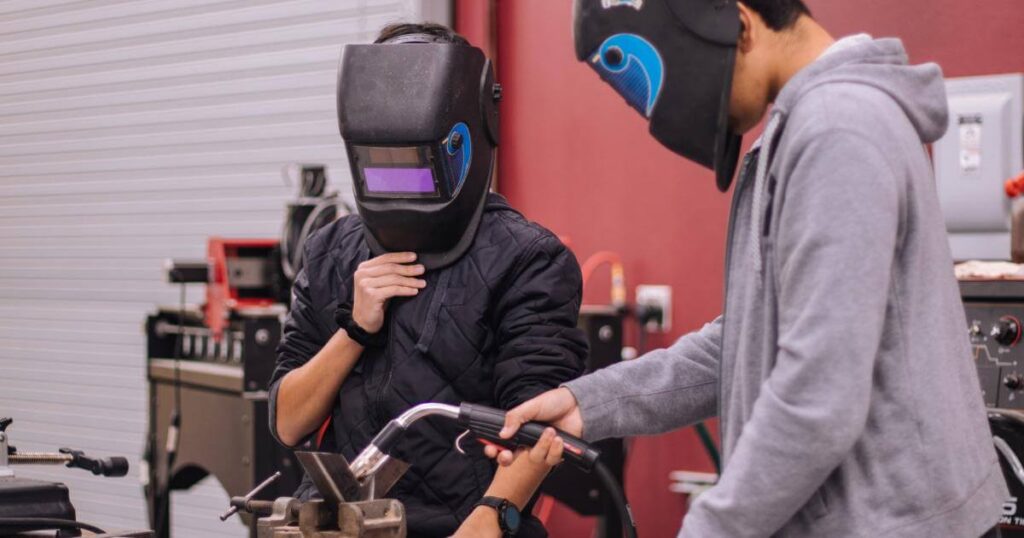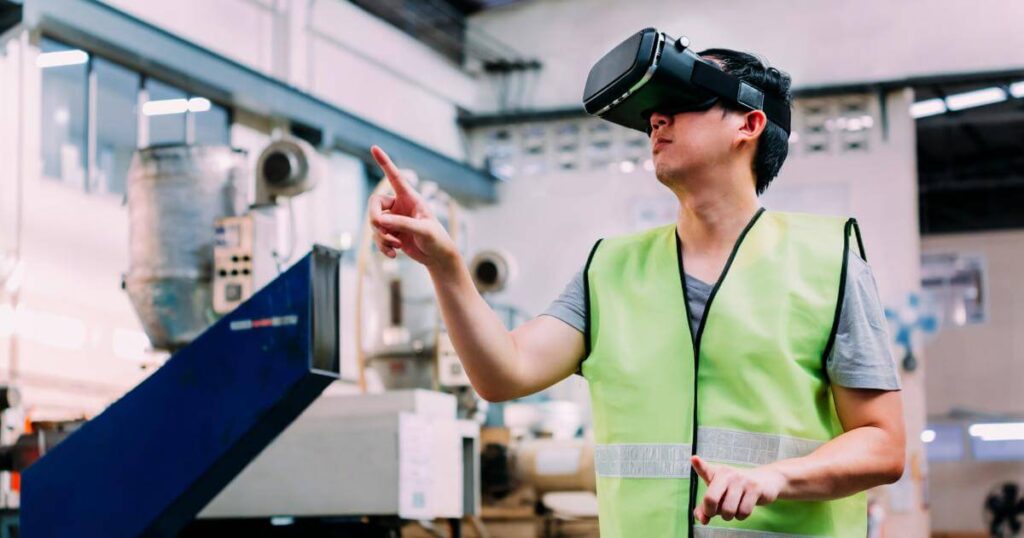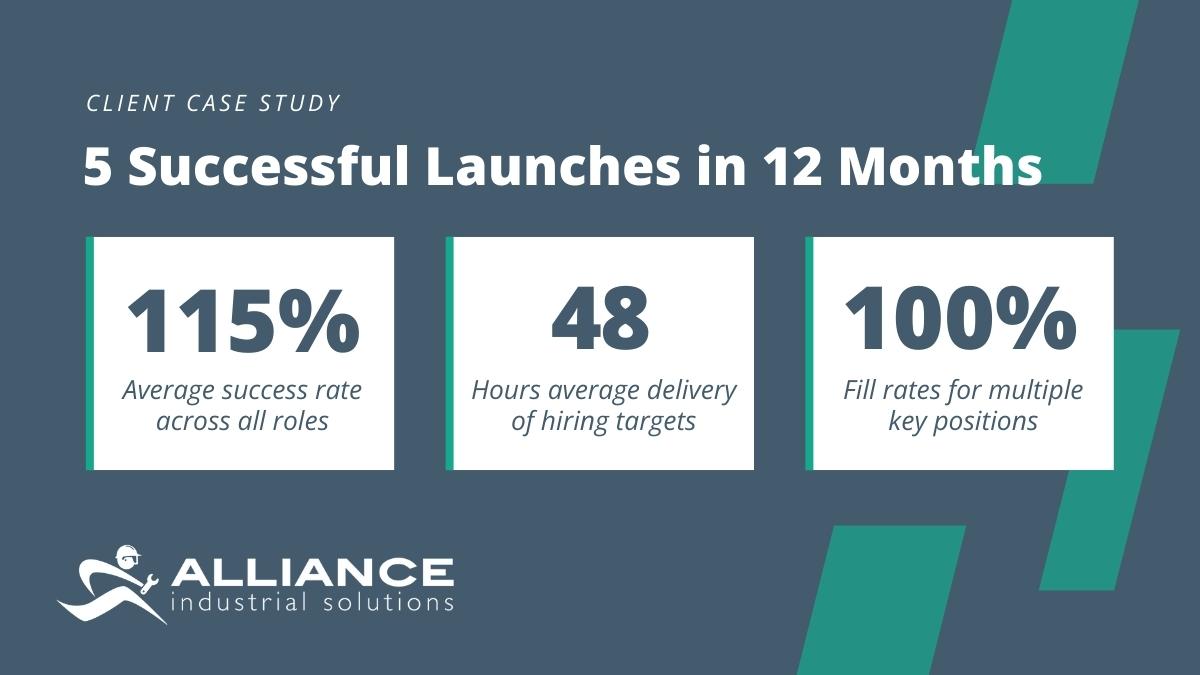It’s no surprise to those of us in the trenches: manufacturing has changed in recent years. And it continues to evolve. Technology is advancing. Equipment is evolving. Factories and processes are becoming more modern.
Our industry is making a big comeback in the United States. As of April 2024, the number of manufacturing jobs in the US was up 489,000 from its low in January 2010, and the Institute of Supply Management’s manufacturing index has shown 15 consecutive months of expansion.
Manufacturers are optimistic about the future.
The dilemma? There’s a labor shortage.
NAM reports that Deloitte and the Manufacturing Institute have found that US manufacturers could face a shortage of workers (over two million!) by 2030, due to baby boomer retirements, economic expansion, and the manufacturing skills gap.
The implications of this skills gap are significant. Without a skilled workforce, manufacturers may struggle to maintain productivity, innovate, and stay competitive in the global market.
The answer: Attract younger generations to manufacturing. Attracting and training young talent is crucial for the industry’s future. Millennials are currently the largest generation in the US, followed by Baby Boomers, and Gen Z takes third place.
Unfortunately, these younger generations don’t necessarily want to work in manufacturing.
They’ve been taught that after high school, everyone should get a four year degree and work in a business. There is still a stigma associated with blue-collar jobs. The average Millennial and Gen Z’er are unaware of the interesting, satisfying, and potentially high-paying careers manufacturing has to offer.
So what can be done to attract these new generations to the manufacturing industry? How can you increase your company’s chances of creating a talent pipeline that’s full of new and innovative young talent? It’s all about changing their perception, and unlearning what they think they know about today’s manufacturing careers.
Below we list five ways to attract Millennials and Gen Z to manufacturing. But first, we must understand who they are.

Understanding Generational Differences
Millennials (born 1981-1996) and Gen Z (born 1997-2012) bring unique values and priorities to the workplace. They prioritize job flexibility and work-life balance, meaningful work, and technological integration in their roles. They are tech-savvy, adaptable, and value continuous learning and development opportunities.
In contrast, baby boomers (who are now retired or retiring in large numbers) typically value job stability, a strong work ethic, and hierarchical structures.
This generational shift necessitates a rethinking of workplace strategies to not only align with the expectations of younger workers, but integrate with their older and experienced counterparts.
Understanding these preferences is key to attracting and retaining these younger generations in manufacturing roles.

Attracting New Generations To Work Requires New Strategies
To successfully attract Millennials and Gen Z to manufacturing careers, companies must adopt fresh approaches tailored to their unique preferences. These generations are driven by technology, meaningful work, and a desire for continuous learning.
Here’s where to start.
1. Enhance Public Awareness
Many younger workers are simply not aware of the high-paying and interesting manufacturing jobs out there today. There is also a misconception that manufacturing jobs are low-paying grunt work.
They don’t realize how tech-driven and innovative the manufacturing industry has become. We must aim to change their perception and rebrand the manufacturing stereotype.
The challenge is not only to open the eyes of potential young workers and students, but also their parents who play a major role in encouraging their children’s career choice.
Events such as the annual initiative, Manufacturing Day, help attract young people to manufacturing and show them first-hand what today’s manufacturing jobs are like.
Engaging with schools, hosting open house events, and participating in career fairs can help change the younger generations’ perception about the possibilities of manufacturing as a career.

2. Invest in Education and Training
We need to promote trade schools and certificate programs as viable alternatives to four-year degrees.
Trade schools offer specialized training that aligns directly with industry needs, providing students with the practical knowledge required for modern manufacturing roles.
These programs are typically shorter in duration and less expensive than traditional four-year degrees, making them an attractive option for young people who do not want to accumulate a lot of debt for a college degree.
Partner with trade schools and community colleges to offer paid internships and apprenticeships. This helps to remove financial barriers and provides young workers with valuable on-the-job training and experience.
Some may view this as an added expense, but it’s really a great investment into the future of your company. You’re giving back and paying it forward while directly coaching the next generation of employees.
You will be providing on-the-job training and real world experience, building loyalty, and paying less than a full-time employee’s salary.
Many high schools encourage career and technical education by offering incentives for students enrolled in college-level tech ed classes, such as:
- Tuition scholarships
- Paying for transportation
- Subsidizing costs of credentialed assessment
- Offering financial rewards to students graduating with industry-recognized credentials

3. Creative Use of Technology in Recruitment Efforts
Millennials and Gen Z are a technology-focused generation — yet many don’t realize that today’s manufacturing relies on cutting edge technology and seek out other career paths.
That’s why rebranding manufacturing as a high-tech industry is so important.
From advanced robotics, 3D printing, and other smart manufacturing techniques, manufacturing leaders must showcase the industry’s innovation and evolution to grab the attention of younger generations.
Let them know this isn’t their grandfather’s factory!
Use virtual reality and interactive platforms. Create an immersive experience of your manufacturing environment. For instance, VR can be used at career fairs to demonstrate welding skills or other technical processes. This is also a great way to screen potential candidates while building interest at your booth.
Create an engaging, mobile-friendly career portal. Younger generations watch videos on their phones for everything from entertainment to learning new things. Share video content that showcases your company’s culture, technological advancements, and the day-to-day work environment. Videos should be short and informative to capturing the attention of these tech-savvy candidates.
Embrace texting for communication. Make text communications part of your candidate journey. Text them when their application has been received, to schedule an interview, even to congratulate them on getting the job and the next steps.
Showcase your company’s technology and Millennials and Gen Z will take note.

4. Modernize Your Management Practices
Millennials and Gen Z are a connected generation. They value one-on-one communication, feedback, and opportunities for growth. There are several ways your company can accommodate.
Employee Reviews + Feedback
Let’s start with the annual review process. And this really goes for all generations. Is meeting once a year really the best way to nurture your employees?
Frequent feedback in addition to annual reviews can help your team’s talent grow along the way. Schedule one-on-one meetings more often. Consider using an employee management tool for performance reviews, real-time feedback, goal management, and engagement.
Communicating more often and staying connected will do wonders for morale and performance development.
Growth + Development
These generations want to lead early on. It’s important to consider a work structure that allows for advancement and growth. Create clear career progression paths and offer opportunities for development.
This can also help with retention, as you’re providing them with a sense of direction and purpose within your company.
Ambassadorship + Mentorship
A company ambassador program can help attract younger workers, too.
Ambassadors can be great representatives to send to college campuses and career fairs to talk about manufacturing jobs and what it’s like to work at your company. They can also lead shop tours during interviews and educational plant visits.
If you’re looking to build camaraderie and collaboration between multi-generational workers, establish a mentorship program. Encourage your seasoned employees (especially those nearing retirement) to share their experiences, knowledge, and guidance with newer employees.

5. Hone Your Online Presence + Social Media
You should be using your website for more than just business to business purposes. It’s a great tool to showcase what your employer brand is all about, from what you manufacture to your company culture and mission.
Millennials and Gen Z care about the big picture and many desire a career path where they can make a difference. Use your online presence to demonstrate your innovation and impacts on society and the environment.
If a potential employee is considering your company as their next place of employment, they are going to Google you. They’re going to look at your social media channels and Glassdoor accounts. What will they find?
A mobile-friendly, multi-faceted, and fresh social media presence says a lot about your company’s modernization and builds credibility. Maintain active and engaging profiles that reflect your company’s innovation, culture, and career opportunities.
Share authentic content regularly to keep your audience informed and engaged. But don’t choose a social media platform if your target audience doesn’t spend time there — do a little research and plan your branding efforts accordingly.

Attracting the Next Generation to Manufacturing
Attracting Millennials and Gen Z to manufacturing careers is essential for addressing the workforce shortages and skills gap facing the industry. And we can start by changing their perceptions. An industry brand refresh, if you will.
We must highlight success stories, emphasize the industry’s technological advancements, and showcase the potential for career growth.
By embracing these approaches, you’ll not only attract newer, younger talent to manufacturing but also ensure they are well-prepared and motivated to contribute to the ongoing success and innovation of our incredible industry.





